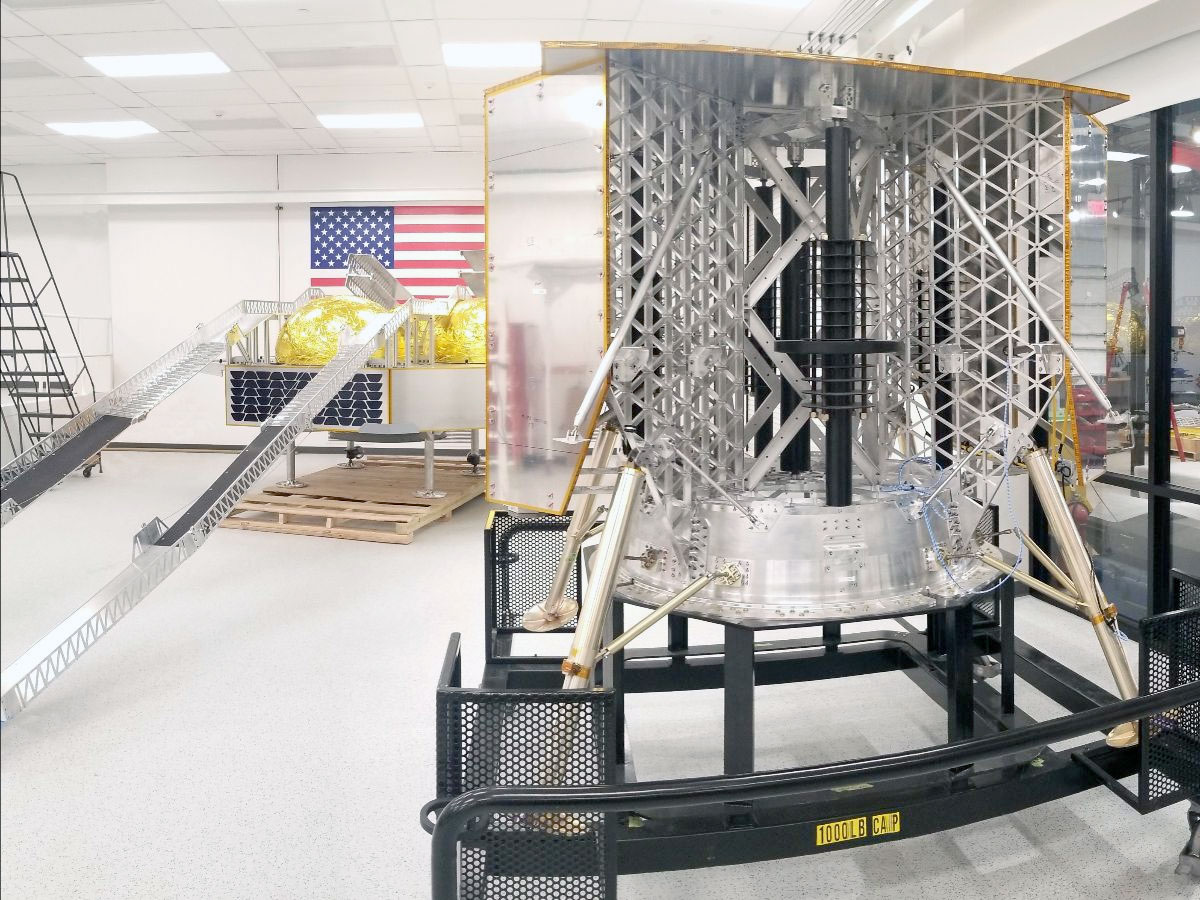Moonshot Museum to feature window into Astrobotic lunar lander work

A new space museum set to open next year will have an unusual highlight: lunar artifacts that have yet to land on the moon.
The Moonshot Museum, now under construction, will be located in the Pittsburgh headquarters of Astrobotic, a company building lunar landers and robotic rovers for NASA and commercial moon missions. The museum's feature attraction will be a large picture window through which visitors will be able to see into Astrobotic's clean room and witness spacecraft being assembled and readied for launches to the moon.
The Moonshot Museum will be Pennsylvania's first museum dedicated solely to space exploration. In addition to offering a literal window into Astrobotic's work, the facility will host interactive exhibits, educational programs and curated experiences aimed at educating visitors, especially students, about possible career paths in the space industry.
Related: SpaceX will launch Astrobotic lander to the moon with NASA's ice-sniffing VIPER rover
"It's about creating STEAM [science, technology, engineering, arts and mathematics] opportunities that will change a child's life," Bill Peduto, Mayor of the City of Pittsburgh, said in a statement released by Astrobotic. "Looking in through that clean room window, they'll be able to see something that will leave this planet, and they'll be changed forever."
"It's about bringing the moon to Pittsburgh," said Peduto.
Astrobotic is currently working on two funded lunar landing missions scheduled to launch over the next few years.
Breaking space news, the latest updates on rocket launches, skywatching events and more!
The company is preparing its Peregrine lander to become the first U.S. spacecraft to touch down on the moon since the Apollo missions and first privately-owned and operated vehicle to do so. Peregrine Mission One (PM1) will deliver more than two dozen payloads to Lacus Mortis, a hexagonal-shaped plain on the near side of the moon, including scientific packages as part of NASA's Commercial Lunar Payload Services (CLPS) program.
Astrobotic is also building a larger Griffin lander, which on its first mission in 2023 will bring NASA's Volatiles Investigating Polar Exploration Rover, or VIPER, to the lunar south pole to survey for water ice.

In addition, the company and Carnegie Mellon University are developing a mid-sized rover called MoonRanger to build high fidelity 3D maps of the lunar surface and demonstrate high-speed, long-range and communication-denied exploration.
Astrobotic is gifting the facilities and utilities for the Moonshot Museum, which will operate as a nonprofit organization.
"We want to provide the 'spark' — that moment when an individual is inspired to pursue a space or tech career who may not have otherwise done so," said John Thornton, Astrobotic CEO and chair of the Moonshot Museum's board of directors. "For Astrobotic, success is as much about execution of its other-worldly missions and business as it is about engaging with and serving the communities it is a part of."
Seed funding and startup operations for the new museum have been provided by the Richard King Mellon Foundation.
"The Foundation made this lead gift to enable people to see first-hand Pittsburgh's leadership role in the future of lunar travel, and to inspire young people to imagine their own futures in this exciting and growing industry," said Sam Reiman, director of the Richard King Mellon Foundation.

The Moonshot Museum's mission is "to make space more accessible by inspiring a diverse audience to write the future of space commerce, science, exploration, and settlement." Both digital and on-site educational workshops will simulate real space missions and foster tech career awareness and readiness in the Pittsburgh region and around the world.
The programs will aim to propel individuals of all backgrounds to pursue space careers across a variety of disciplines, from science and engineering to medicine, business, law, policy, and the humanities and arts.
"When you mention space, people think of different things. Whether it's stars, planets, astronauts or engineers, a common theme is the persistence of curiosity. Curiosity is a spark that can either catch fire or fizzle out — and we want it to catch!" said Sam Moore, executive director of the museum.
Follow collectSPACE.com on Facebook and on Twitter at @collectSPACE. Copyright 2021 collectSPACE.com. All rights reserved.

Robert Pearlman is a space historian, journalist and the founder and editor of collectSPACE.com, a daily news publication and community devoted to space history with a particular focus on how and where space exploration intersects with pop culture. Pearlman is also a contributing writer for Space.com and co-author of "Space Stations: The Art, Science, and Reality of Working in Space” published by Smithsonian Books in 2018.
In 2009, he was inducted into the U.S. Space Camp Hall of Fame in Huntsville, Alabama. In 2021, he was honored by the American Astronautical Society with the Ordway Award for Sustained Excellence in Spaceflight History. In 2023, the National Space Club Florida Committee recognized Pearlman with the Kolcum News and Communications Award for excellence in telling the space story along the Space Coast and throughout the world.

